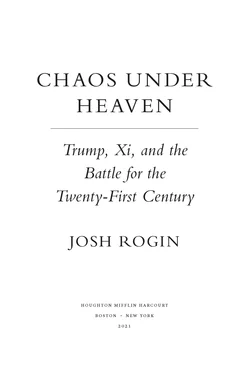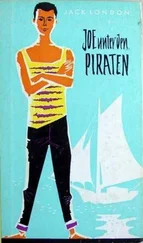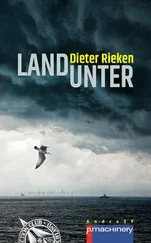Knowing the significance of the Wuhan virologists’ discovery, and knowing that the WIV’s top-level biosafety laboratory (BSL-4) was relatively new, the US embassy health and science officials in Beijing decided to go to Wuhan and check it out. In total, the embassy sent three teams of experts in late 2017 and early 2018 to meet with the WIV scientists, among them Shi Zhengli, often referred to as the “bat woman,” because of her extensive experience studying coronaviruses found in bats.
The American diplomats were also concerned about the WIV lab because of its involvement in what are known as “gain of function” experiments, whereby the transmissibility or pathogenicity of dangerous pathogens is deliberately increased. The idea is to predict how viruses might evolve in ways that hurt humans before it happens in nature. But by bypassing pathogens’ natural evolutionary cycles, these experiments create risks of a human-made outbreak if a lab accident were to occur. It was for this very reason the Obama administration issued a moratorium on gain-of-function experiments in October 2014. One such study at the University of North Carolina continued with permission despite the moratorium. Shi Zhengli was a contributor to that study, which used gain-of-function research to create a novel chimeric bat coronavirus that could more easily infect human cells. In late 2015, an article in Nature warned that it was too risky.
When they sat down with the scientists at the WIV, the American diplomats were shocked by what they heard. The Chinese researchers told them they didn’t have enough properly trained technicians to safely operate their BSL-4 lab. The Wuhan scientists were asking for more support to get the lab up to top standards. The first two delegations were made up of technical experts and lower-level officials, but the final delegation of US officials, in March 2018, was the most senior group and was led by Jamison Fouss, the consul general in Wuhan, and Rick Switzer, the embassy’s counselor on the environment, science, technology, and health.
The diplomats wrote two diplomatic cables back to Washington reporting on their visits to the Wuhan lab. More should be done to help the lab meet top safety standards, they said, and they urged Washington to get on it. They also warned that the WIV researchers had demonstrated that bat coronaviruses could more easily infect human cells than previously thought, through the same cell receptor (ACE2) that had been used by the original SARS coronavirus. “This finding strongly suggests that SARS-like coronaviruses from bats can be transmitted to humans to cause SARS-like diseases,” the cable stated. “From a public health perspective, this makes the continued surveillance of SARS-like coronaviruses in bats and study of the animal-human interface critical to future emerging coronavirus outbreak prediction and prevention.”
The US diplomats were warning their colleagues back in Washington that the research being done at the WIV lab was in danger of causing a public health crisis. They kept the cables unclassified because they wanted more people back home to be able to read and share them. But there was no response from State Department headquarters. And as US-China tensions rose over the course of 2018, American diplomats lost access to labs such as the one at the WIV—and therefore lost visibility into the very issue to which they were trying to draw the attention of the US government.
“The cable was a warning shot,” one US official said. “They were begging people to pay attention to what was going on.” The world would be paying attention soon enough—but by then, it would be too late.
Origins
When a source tipped me off to the existence of the cables in early March, I tried everything I could think of to get my hands on them. I even went to Pompeo’s senior staff directly to try to convince them to hand them over. Pompeo thought about it but refused. He needed to keep up the veneer of good relations with China, and these revelations would make that job more difficult. The cables were not leaked by any Trump administration political official, as many in the media wrongly assumed. In fact, Pompeo was very angry when he found out about the leak.
Eventually I found a source who had the cables and shared them with me, without any authorization. I called around to get reactions from scientists and other American officials I trusted. What I found was that, just months into the pandemic, a large swath of the government already believed the virus had escaped from the WIV lab, rather than having leapt from an animal to a human at the Wuhan seafood market or some other random natural setting, as the Chinese government had initially claimed.
The hypothesis that the virus had emerged naturally, without any connection to the WIV lab, rested entirely on circumstantial evidence. Most previous virus outbreaks had been the result of what’s called a “natural spillover” and the US scientists who worked with the WIV scientists were publicly telling anyone and everyone that this had to be the case again—because, they claimed, there was just no way that the new coronavirus could have come from the lab. Shi, the “bat woman,” released a statement on February 3 asserting that the WIV had searched its databases and not found any evidence that it previously had the new virus.
The WIV did have in its files a virus that was 96.2 percent similar genetically to the new coronavirus, Shi claimed in a February 3 scientific paper in Nature. It was called RaTG13 and its genome was the most similar known in the world to that of SARS-CoV-2 (which scientists at that time were also referring to as 2019-nCoV, for “2019 novel coronavirus”). Shi’s paper noted that “RaTG13 is the closest relative of 2019-nCoV and they form a distinct lineage from other SARSr-CoVs.” This made it possible that RaTG13 not only was a close relative of SARS-CoV-2 but also was its direct ancestor: that the new coronavirus had actually descended from this closely related pathogen, which had been discovered in the wild and brought to the Wuhan lab. But since SARS-CoV-2 had not been found in her files, Shi was arguing, it could not possibly have escaped the lab.
Even the closest of kin still have different genomes—and in this case, the genetic differences between these coronaviruses were considerable, despite their similarities. According to one researcher, these differences represented between twenty and fifty years of evolutionary changes caused by random mutations, although other researchers say that timeline may be overestimated. Some researchers conjecture that the evolution of SARS-CoV-2 likely happened outside the lab, and that it jumped to humans via an intermediate host animal, such as a pangolin, which could be found in an animal market, and in which a different, less closely similar relative of SARS-CoV-2 had indeed been found. Other researchers conjecture that there’s no evidence that both SARS-CoV-2 and the virus found in pangolins may come directly from bats. The bottom line is that the direct link between RaTG13 and SARS-CoV-2 has not been found.
The similarities between RaTG13 and SARS-CoV-2 nevertheless drew attention, and presented a challenge for defenders of the circumstantial case for the natural-spillover theory, because it suggested that SARS-CoV-2 likely came from bats in Yunnan, which was more than one thousand kilometers away from Wuhan. So too did the fact that the Chinese government had destroyed the evidence at the Wuhan market—and that the first known case had not even been traced to there, according to the Lancet study, which was published on February 15.
What’s more, it soon emerged that RaTG13 may have been a virus that had already been proved to be deadly to humans. Shi, in response to repeated queries, stated that RaTG13 had previously been named Bt-CoV/4991 and had been found by her lab in 2013 in bat feces collected from a mine in the Mojiang area of Yunnan Province—the same province where, in a cave, WIV researchers had discovered the three super-contagious coronaviruses that had inspired the Wuhan cables. Shortly before BtCoV/4991 was discovered, six miners had been cleaning bat feces there when they came down with a mysterious illness. They were taken to Wuhan, where three of them died. The symptoms those miners displayed were eerily similar to the symptoms caused in 2020 by the new SARS-CoV-2 virus, according to a master’s thesis written by a doctor who oversaw the miners’ treatment at the time. The thesis subsequently was translated into English and published by Western researchers in July 2020.
Читать дальше











